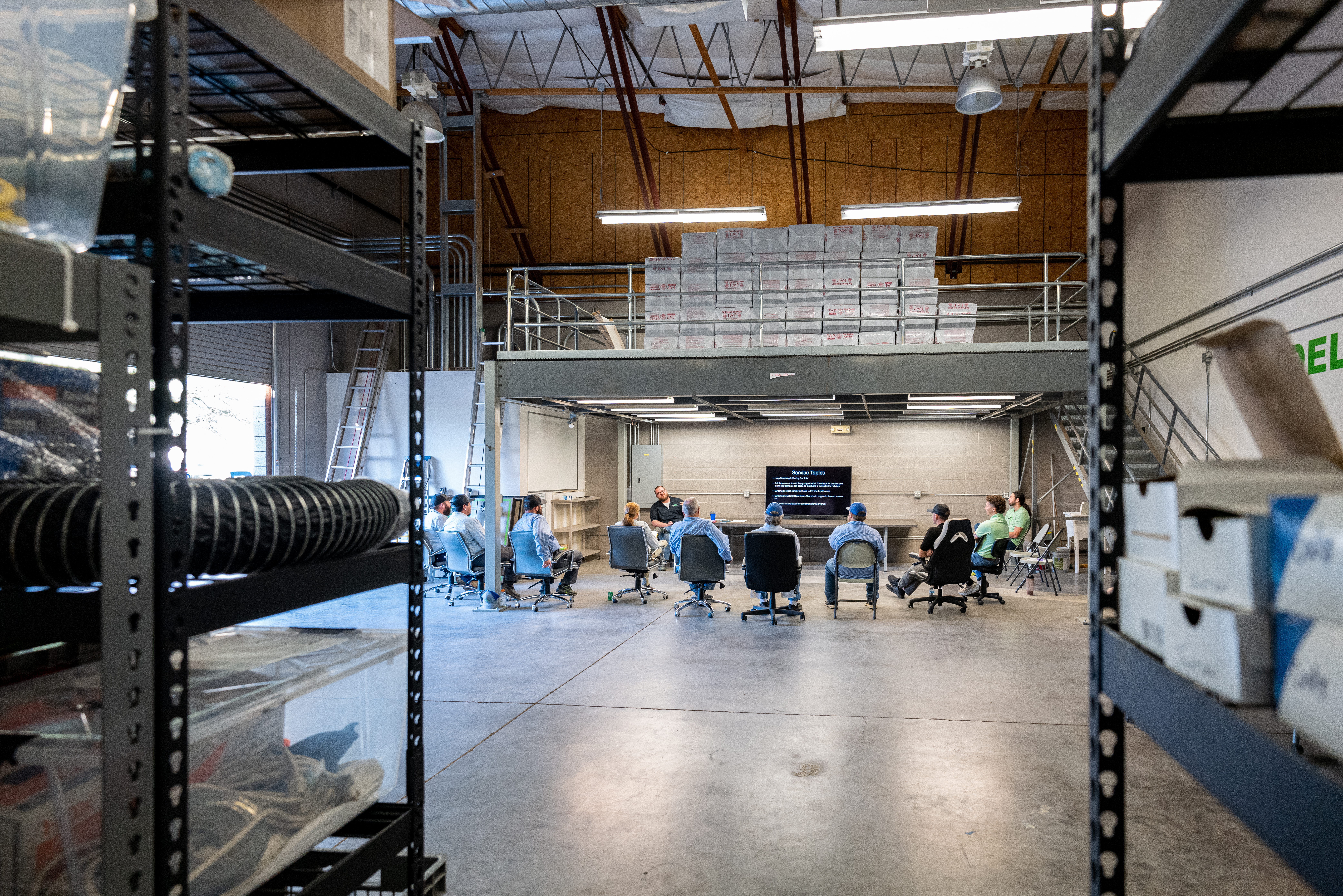Innovative Pest Control Technologies: IoT, Biological Methods, and AI Solutions

Pest Control Technology: 7 Solutions Backed By Science
Pests are not only a bothersome inconvenience but can also pose serious threats. They are carriers of diseases, can contaminate food, and cause property damage. Traditional pest control methods often involve the application of chemicals, but these substances not only harm pests but also pose risks to humans, beneficial insects, animals, and the environment.
However, advancements in pest control technology are swiftly altering this landscape. Present-day field technicians have various choices for secure and efficient pest control solutions, ranging from AI-powered monitoring systems to automated pheromone traps.
Internet of Things (IoT): Smart Traps and Monitoring Systems
The Internet of Things, or IoT, refers to physical objects — literally things — embedded with sensors that collect and exchange data with other objects and systems via the Internet. In pest control, IoT powers technology such as smart traps and electronic monitoring systems that detect and track pests.
What Makes IoT Pest Control Exciting
While still early in development, IoT-based pest control solutions already show positive impacts for field technicians and homeowners alike:
Efficiency and effectiveness: IoT systems automate tracking and identifying pests, freeing technicians to focus on other tasks.
Reduced costs: IoT systems reduce the need for regular inspections and treatments. They also detect pest activity early, preventing costly property and crop damage.
Environmental impact: Real-time, round-the-clock data on pest activity enables technicians to target their treatments more effectively, reducing the use of chemical pesticides.
IoT plays a significant role in bringing AI to pest control, too. The data collected by IoT devices flows back to a central system where AI can analyze the data.
How IoT Pest Control Works
IoT pest control systems typically place a network of sensors and traps throughout a property or area. The sensors collect data on pest activity and environmental factors, such as temperature, humidity, and movement. This data is transmitted to a central hub, which uses the data to identify pests and track their location.
When the system detects a pest, it can automatically activate traps or alert technicians.
Examples of IoT Pest Control
The Anticimex SMART Digital Rodent Control System fights rats and mice with technology instead of chemicals. It detects infestations before they happen based on the time and frequency of detections and an algorithm predicts rodent local populations.
Rentokil’s PestConnect offers another example of IoT-based pest control. The system monitors facilities 24/7 for pests using infrared sensors. It issues real-time alerts that trigger a rapid response from field technicians, making it a strong fit for sensitive environments.
Biological Pest Control
Biological pest control uses living organisms — predators, parasites, pathogens — to manage insects, weeds, and plant diseases. Biological pest control methods range from releasing beneficial insects to applying microbe-based sprays.
What Makes Biological Pest Control Exciting
Biological pest control offers several advantages over traditional chemical control methods, including ones that make homeowners very happy:
Environmental impact: Biological pest control does not use synthetic pesticides, which can harm beneficial insects, wildlife, and the overall environment.
Sustainability: Biological pest control agents enable technicians to do more with less. For instance, biological pest control balances predator and prey numbers, making it a strong fit for integrated pest management (IPM) plans.
Effectiveness: Some pests, such as aphids, have developed resistance to conventional pesticides. The Colorado potato beetle alone resists more than 50 different kinds of insecticide. Biological pest control agents give exterminators more options to combat the increasing numbers of insecticide-resistant bugs.
It’s worth noting that while biological pest control can replace or enhance traditional chemical pesticides, biological methods also tend to require more planning and management.
How Biological Pest Control Works
Biological pest control works by directly or indirectly introducing natural enemies of the target pest into the environment. These natural enemies may attack or compete with the pest for food and resources.
Ladybugs, for instance, are popular in gardens and greenhouses because they munch on aphids. Contrast releasing insects with spraying a Bacillus thuringiensis (Bt) solution. This approach introduces a naturally occurring bacterium toxic to certain pests when they eat it.
Examples of Biological Pest Control
Beneficial nematodes are a classic example of biological control. Nematodes are microscopic worms that parasitize lawn pests such as grubs. There’s even one species, Steinernema carpocapsae, that targets roaches.
Another example is the Trichoderma, a naturally occurring fungus that helps control various plant diseases, such as root rot and damping-off. Not only does it prevent plant diseases, but it also promotes healthy plant growth and nutrient utilization.
Last, TrueDetx Bed Bug Rapid Test helps prevent bed bug infestations by testing for antigen levels around beds.
Pheromonal Pest Control
Pheromonal pest control confuses, disrupts, or attracts insects by mimicking their pheromones. These pheromones are the chemical signals insects use to communicate with each other.
What Makes Pheromonal Pest Control Exciting
Pheromonal pest control offers several advantages over traditional chemical control methods. These advantages also make pheromonal pest control products a strong choice for enhancing other methods:
Effectiveness: Pheromonal pest control works at all stages of pests’ development, including eggs, larvae, and adults.
Targeting: Pheromones come from specific insects, making pheromonal pest control products able to target specific insects. Little, if any, harm comes to beneficial insects.
Environmental impact: Since pheromonal pest control products don’t use synthetic pesticides, they pose far less environmental risk than traditional chemical pest control.
Furthermore, the safety and flexibility of pheromonal pest control products make them suitable for a wide range of environments. That includes homes, gardens, farms, and businesses.
How Pheromonal Pest Control Works
Pheromonal pest control works in several different ways. Traps, for instance, use pheromones as bait to lure insects inside. Sex pheromones work differently. They disrupt mating by confusing insects, leading them away from each other.
Examples of Pheromonal Pest Control
Pheromone-based traps and sprays are a big help against moths, mosquitoes, cockroaches, and other insects that are difficult to control with traditional methods. Roach traps can be bought in bulk. They lure roaches inside, then trap them in glue.
Sulterra’s mating disruption solutions help orchards, vineyards, and fields bring pest populations down and yields up season by season. Stations placed throughout the property steadily release pheromones into the air, leading male insects away from the females.
Receptor Interference
One of the newest technologies in pest control, receptor interference, prevents insects from detecting important chemical messengers in the environment, such as hormones and pheromones. This blocks the insect from receiving signals to feed, mate, and more.
What Makes Receptor Interference Exciting
Like pheromonal and biological pest control, receptor interference improves upon many of the drawbacks to traditional chemical control, including:
Targeting: Receptor interference products are specific to the target pest, so they pose little danger to beneficial insects.
Environmental impact: Receptor interference products don’t use synthetic pesticides, keeping chemical pollutants out of the environment.
Effectiveness: Receptor interference products threaten insects at all stages of their development, from egg to larva to adult.
Receptor interference is a new and promising pest control technology, though it is still under development. Review labels closely when incorporating receptor interference into your pest control services.
How Receptor Interference Works
Receptor interference products block an insect’s receptors from binding with specific molecules, such as pheromones and hormones. Insects rely on these molecular signals to tell them when it’s time to do something, like mate, feed, or lay eggs. Receptor interference makes sure they never get the message.
Example of Receptor Interference
Flubendiamide blocks an insect’s ryanodine receptor, which is found in its muscles. When flubendiamide binds to the ryanodine receptor, it causes uncontrollable muscle contraction, leading to paralysis and death of the insect.
The Sterile Insect Technique (SIT)
The sterile insect technique (SIT) is a pest control method that releases sterilized male insects into the wild. The sterile males mate with wild females, who lay eggs that don’t hatch.
In concept, SIT shares some characteristics with insect growth regulators or IGRs. IGRs are pesticides that act as hormone mimics to disrupt insect reproduction.
What Makes SIT Exciting
SIT is a safe, effective pest control technology used to target a variety of insects. SIT advocates point to advantages, such as:
Effectiveness: SIT stops reproduction from happening. And unlike with chemical and biological pest control, resistance isn’t an issue with SIT.
Targeting: SIT works on the single species that’s treated. It poses no harm to other insects or living organisms.
Environmental impact: SIT is a truly chemical-free solution, posing no threat of polluting the environment. That makes it good for sensitive areas.
One knock on SIT, however, is its upfront cost. It typically requires repeated applications over several seasons, which leads to a long-term decline in pest populations.
How SIT Works
SIT starts by irradiating male insects with ionizing radiation, such as gamma rays or X-rays. This renders them sterile without harming them. Once released into the wild, the sterile males mate with wild females. The females lay eggs, but they’re unfertilized from the sterile sperm.
The process is repeated over multiple seasons, leading to a decline in the pest population.
Examples of SIT
SIT success stories include the Mediterranean fruit fly, or Medfly, and the screwworm. Medflies are a major agricultural pest that damages a variety of fruits and vegetables. SIT has greatly improved Medfly control in the United States, Mexico, Australia, and other nations.
As for the screwworm, its flies lay eggs in open wounds. The larvae hatch and feed on the living tissue, leading to severe infections and death. SIT has been instrumental in controlling screwworm flies from North and Central America.
AI in Pest Control
Artificial intelligence (AI) can transform the pest control industry, especially in developing new technologies to detect, monitor, and control pests.
What Makes AI in Pest Control Exciting
AI pest control promises to bring a number of advantages to the industry, including:
Accuracy and efficiency: AI can analyze large amounts of data to identify patterns and trends that may be difficult or impossible for humans to detect. Field technicians can more accurately predict where and when pests are likely to occur.
Reduced costs: AI systems can automate pest monitoring and treatment tasks, helping pest control companies reduce operations costs.
Sustainability: AI will drive the development of new solutions that are more targeted and environmentally friendly than current pest control methods.
Though AI is still new to the pest control industry, it’s already impacting. Take Trapview’s AI-powered pheromone trap, developed to help stop the $220 billion in agricultural damage pests cause yearly.
How AI in Pest Control Works
AI systems use huge datasets — images of pests, scientific descriptions of pest behavior, and environmental conditions — to identify pests and patterns in the data. This knowledge can then be used to develop AI-powered pest control solutions.
Examples of AI in Pest Control
AI-powered cameras monitor pests 24/7 and can detect and identify pests such as termites through data such as movement, heat, and sound. Another example is the use of AI to develop new pest control products, such as new pesticides and pheromone traps, that are even more targeted and effective.
Integrated Pest Management (IPM)
Integrated pest management (IPM) emphasizes a sustainable long-term approach to pest control by combining biological, cultural, physical, and chemical tools to minimize economic, health, and environmental risks.
What Makes IPM Exciting
IPM’s benefits appeal to a wide range of homeowners and businesses, especially those who prioritize the environment:
Effectiveness: IPM works with the environment to manage pests over the long term, reducing their numbers while preventing them from developing resistance to pesticides.
Environmental impact: IPM programs favor non-chemical methods to control pests, and use pesticides sparingly only when certain thresholds have been met.
Sustainability: IPM focuses on long-term, sustainable pest control plans, reducing costs over time while protecting human health and the environment.
Note that developing an IPM plan can be complex. It’s a good fit for pest control professionals who enjoy deep problem-solving and creating custom solutions.
How IPM Works
IPM programs typically involve the following steps:
Identify the pest: Identify the pest causing the problem, then learn more about its life cycle and behavior. Use this information to develop your IPM plan.
Set action thresholds: Define the level of pest activity when control measures, such as the level of damage, should be taken.
Monitor the pest population: Track pest activity and identify trends so you implement control measures at the right time.
Implement control measures: IPM could theoretically combine any type of pest control on this but prioritizes biological, cultural, and physical methods before using chemicals.
Evaluate the results: Once you implement control, evaluate the results to ensure they’re effective. If needed, adjust the IPM plan to improve its effectiveness.
Remember that the best IPM plan depends on the specific pest and the situation.
Examples of IPM
Releasing ladybugs into a greenhouse or garden could be part of an IPM plan. Ladybugs eat aphids, keeping the plant-sucking pests’ population under control. Crop rotation is another example of an IPM practice. Planting different crops in the same field each year keeps pests and diseases from getting a foothold.
For a look at a comprehensive program, check out this IPM plan for commercial greenhouses by Oklahoma State University.
Ready to Level Up Your Pest Control Business?
With FieldRoutes, you spend less time running field operations, so you can spend more time researching which pest control technologies will put your business ahead.
The FieldRoutes® Operations Suite automates tasks such as route planning, invoicing, and real-time reporting, all from a central dashboard.
See how with a free demo.




